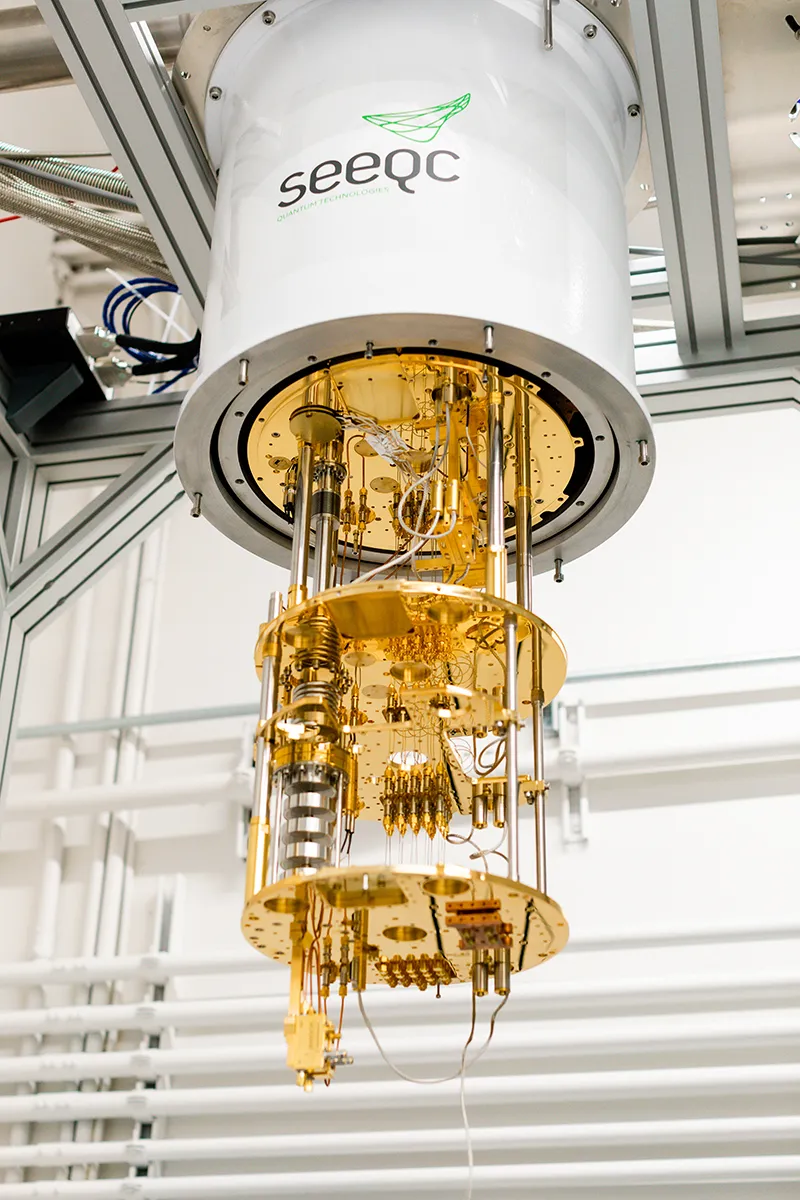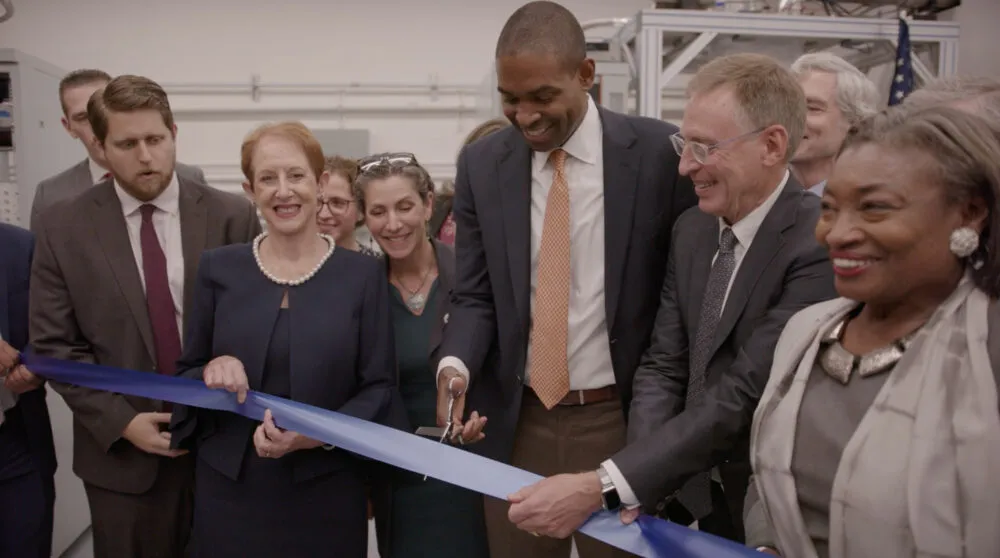Spotlight
|
February 8, 2023
How SEEQC is Breaking Quantum Computing out of the Lab and into the Real World
SEEQC hosted Lt. Governor Antonio Delgado and other elected New York officials at the grand opening of its $4 million chip manufacturing facility in Elmsford, NY.
Quantum computing is helping lay the foundation for future innovation with the potential to solve complex problems far faster than existing supercomputers. But the inherent barriers to large-scale quantum computing make the technology difficult to bring to market and remains a long way off. In New York City, Partnership Fund portfolio company SEEQC is developing deep technology to change that. By making quantum computing commercially viable, SEEQC is helping move the technology beyond academia and into real-world applications.
SEEQC is a hardware quantum computing company developing the first Digital Quantum Management (DQM) System-on-a-Chip to make quantum computing sustainable, cost-effective and commercially viable. SEEQC’s system is the first application-specific, scalable quantum computer. With the recent CHIP and Science Act of 2022 expected to bring new funding, resources and jobs to cities across the U.S., companies like SEEQC are helping preserve the nation’s competitive edge while creating economic opportunities in an up-and-coming technology sector poised for success.
In addition to its home at the Brooklyn Navy Yard’s Newlab, SEEQC owns and operates a multi-layer superconductive electronics chip fabrication facility in Elmsford, NY. In October 2022, SEEQC hosted Lt. Governor Antonio Delgado and other elected New York officials in Elmsford, at the opening and ribbon cutting of its $4 million chip manufacturing facility. The new facility is one of only a few facilities like this in the world, and even fewer in the US. SEEQC’s manufacturing facility will bring chip manufacturing on-shore to US soil and advance NY’s economy into new ventures. SEEQC also has teams and facilities in London, UK, and the University of Naples in Italy.
After investing in SEEQC in 2019, the Partnership Fund continues to support the company’s efforts to expand its research and development and help usher in the future of quantum computing. We spoke to SEEQC CEO John Levy to discuss the company’s unique approach to quantum computing and what’s next for the sector.
“As quantum technology advances, there are applications across all sectors and industries… such as pharmaceuticals, chemistry, logistics, finance and energy.”
SEEQC is a spin-out of Hypres, a leading developer of superconductor electronics. Tell us more about what you do at SEEQC.
SEEQC stands for scalable, energy-efficient quantum computing. We’re developing the first all-chip-based, digital quantum computing platform designed for global businesses by building scalable application-specific systems to meet our customers’ industry-specific needs. To do that, we combine classical and quantum technologies at the chip level. This combination allows us to address many challenges endemic to more “brute force” quantum computing, such as cost, complexity, latency, noise, energy/heat dissipation, cabling, and other limiting performance parameters.
Our quantum system provides the energy- and cost-efficiency, speed, and digital control required to make quantum computing useful, allowing us to one day bring the first commercially scalable quantum computing applications to the market.
How is SEEQC’s approach to quantum computing unique?
When you imagine classical computing, the computing we do today with our laptops and mobile devices, these platforms operate at room temperature and are based on well-developed chip technology using CMOS (complementary metal-oxide-semiconductor) fabrication processes.
By contrast, quantum computing systems operate in cryogenically-cooled environments — colder than the temperature of space — to successfully operate the quantum bits or qubits needed to power a quantum computer and require specialized chips designed to work in such challenging conditions. In that environment, CMOS circuits are too slow, require too much power (and the need to dissipate the heat from such power), and are too noisy to operate effectively in a quantum computing system.
This is where SEEQC stands out: we design our chips to increase SEEQC’s scaling potential and lower energy consumption.
Our single flux quantum (SFQ) superconductive chips help us avoid these environmental challenges. We’re building chips that operate at greater than 10X the speed of CMOS circuits, at 3–5 orders of magnitude lower power, and with a zero-noise floor. Because we work with energy-efficient chips at the core of our sustainability initiative, we can scale our systems in a way that enables us to operate with relatively low power compared to other designs.
Which sectors are likely to be early adopters of quantum computing?
As quantum technology advances, there are applications across all sectors and industries, though we see early adopter interest in fields such as pharmaceuticals, chemistry, logistics, finance and energy. We recently announced our first application-specific quantum computer design win with Merck KGaA, a $9M program sponsored by Innovate U.K., and we expect to announce similar customer relationships in the coming weeks.
How will the recently signed CHIPS and Science Act of 2022 impact the sector?
The CHIPS and Science Act invests billions of dollars toward domestic semiconductor manufacturing and science research supporting innovative chip manufacturers, two key elements of SEEQC’s core mission. Our firm’s high-speed and energy-efficient superconductive chips lie at the core of our approach to developing full-stack quantum computing solutions.
The Act also includes critical funding for multiple quantum computing initiatives to support innovation on developing a quantum network infrastructure, national research on quantum computing, quantum workforce development investments and establishing access to U.S. quantum computing hardware and clouds for research purposes.
Since SEEQC operates a superconductive chip foundry in Elmsford, NY and milliKelvin test center, the CHIPS Act represents a significant opportunity for our current and future work. We consistently upgrade our facilities to stay up-to-date with chip manufacturing standards. So, our goal is to build a state-of-the-art foundry with new-generation tools that will keep us in the lead as we scale up our manufacturing for quantum computers.




